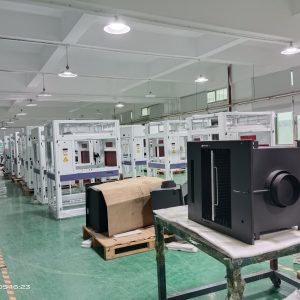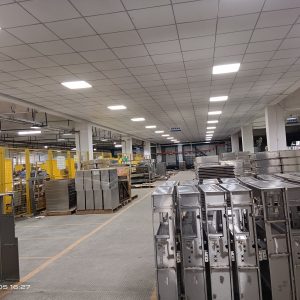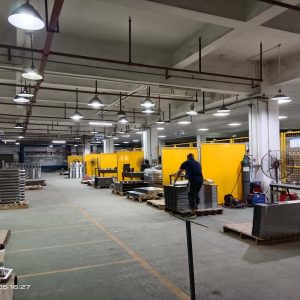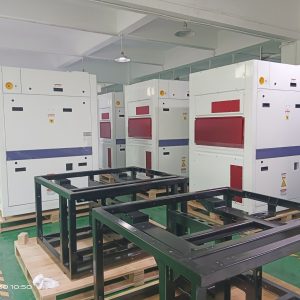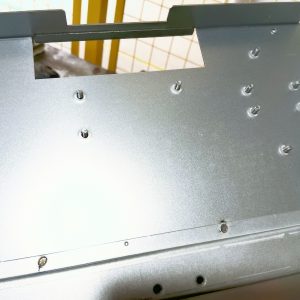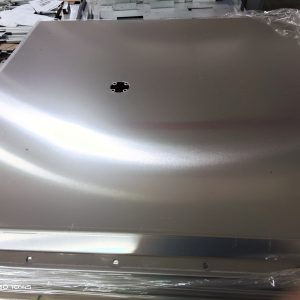Designing for sheet metal fabrication requires consideration of material properties, fabrication processes, and the capabilities of manufacturing equipment. Adhering to proper design guidelines helps in reducing costs, minimizing errors, and ensuring that the parts can be easily manufactured. Below are key sheet metal fabrication design guidelines:
1. Material Selection
Choose the Right Material: Different materials have different properties such as strength, ductility, and corrosion resistance. Common materials include:
Steel: Strong and versatile, often used for structural components.
Stainless Steel: Corrosion-resistant, used in environments that demand high hygiene or resistance to oxidation.
Aluminum: Lightweight and corrosion-resistant, often used in aerospace and automotive industries.
Copper/Brass: Used for electrical and decorative applications due to their excellent conductivity and appearance.
Material Thickness (Gauge): Select appropriate material thickness for the application. Thicker materials provide strength but are harder to bend and form, while thinner materials are easier to work with but may lack durability.
2. Bend Design
Minimum Bend Radius: Ensure the bend radius is at least equal to the material thickness to prevent cracking. Larger bend radii reduce stress on the material and extend tool life.
Bend Relief: Include bend relief features (small cutouts) to prevent tearing or distortion near the bend. These are especially important near edges and tight corners.
Bend Allowance: Account for material stretching during bending. Bend allowance compensates for the elongation of the material, ensuring accurate dimensions.
Bend Direction: Align bends with the grain direction of the metal to reduce the risk of cracks. Bending perpendicular to the grain is generally stronger.
3. Hole and Slot Design
Hole Placement: Holes should be placed at a distance from the edge that is at least 1.5 times the material thickness to avoid distortion during punching or cutting.
Minimum Hole Size: The diameter of holes should be at least as large as the material thickness to ensure accuracy and avoid damage to tooling.
Slot Design: Slots should be at least as wide as the material thickness and as long as 1.5 times the material thickness. Rounded ends on slots reduce stress concentrations and improve manufacturability.
4. Tolerances
Keep Tolerances Realistic: Tight tolerances increase manufacturing complexity and costs. Use looser tolerances where possible, particularly for non-critical features.
Standard Tolerances: Common tolerance ranges for sheet metal fabrication are ±0.005″ to ±0.020″, depending on the process and feature size. Consult with the fabricator for capabilities.
5. Bending and Forming Guidelines
Avoid Tight Bends Near Edges: Leave sufficient space between a bend and the edge of the part (at least 2-3 times the material thickness) to avoid deformation or tearing.
Account for Springback: When designing bent parts, take springback into consideration. Springback occurs when the material partially returns to its original shape after bending, so the bend angle might need to be slightly over-bent.
Use Simple Bends: Design bends that are easy to fabricate using standard press brake tooling. Complex bends may require specialized tooling and increase costs.

6. Corner and Edge Design
Fillet Corners: Avoid sharp corners in the design, as they can concentrate stress and cause cracking. Instead, use filleted or rounded corners with a radius at least equal to the material thickness.
Edge Distance: Maintain sufficient distance between holes and the part’s edge (typically at least twice the material thickness) to prevent deformation or tearing during punching.
7. Notches and Tabs
Minimum Notch Width: Notches should be at least as wide as the material thickness to ensure accurate cutting and avoid tool wear.
Tab Length: Tabs should be at least three times longer than the material thickness. Longer tabs provide strength and prevent deformation.
8. Design for Assembly
Self-Locating Features: Use features like tabs, slots, or dimples to help align parts during assembly, reducing the need for fixtures or jigs.
Standardized Fasteners: Use standardized hole sizes and fasteners, like screws or rivets, to streamline the assembly process.
Avoid Complex Assemblies: Design for ease of assembly by minimizing the number of components and simplifying connections (e.g., using snap fits or interlocking features).
9. Welding and Joining Considerations
Design for Welding Access: Ensure there is enough space for welding tools and that joints are designed to be easily accessible for welding.
Spot Welding: Where possible, design overlapping flanges for spot welding, which is efficient for joining sheet metal parts.
Minimize Welding: Welding adds costs and potential distortion, so minimize the number of welded joints when possible.
10. Embossing and Forming Features
Emboss Depth: Limit embossing depth to 3-4 times the material thickness to avoid excessive stretching or tearing of the sheet.
Avoid Thin Walls: Ensure sufficient material thickness remains after forming operations to maintain part strength and prevent warping.
11. Surface Finishing
Plan for Coating or Finishing: Consider surface treatments like powder coating, painting, or galvanizing in the design. Ensure that holes, threads, and other features are designed to accommodate these processes.
Avoid Sharp Edges: Sharp edges can cause injury and make surface finishing more difficult. Use chamfers or rounded edges instead.
12. Prototyping and Testing
Create Prototypes: Before moving to full production, prototype the design to identify any potential issues in the manufacturing process or in the assembly of parts.
Iterate and Optimize: Based on feedback from prototypes, refine the design to improve manufacturability, reduce costs, and enhance product performance.
13. Consult the Fabricator
Communicate with the Manufacturer: Early involvement of the fabricator in the design process can help ensure that the design aligns with manufacturing capabilities and best practices.
Standardized Tooling: Leverage the manufacturer‘s available tooling and equipment to avoid unnecessary custom tooling costs.
By following these guidelines, you can ensure that your sheet metal designs are efficient to produce, meet performance requirements, and remain cost-effective. Proper design consideration can greatly improve the manufacturability and durability of the final product
For all your electrical enclosures from China, contact china sheet metal fabrication companies-JIATONG now.
